In Hinduism’s rich tapestry of deities, God Shiva, also known as Lord Shiva, stands as a paramount figure. Revered as the Destroyer and Transformer within the divine Trimurti, Shiva embodies potent power and profound mystique. Millions globally worship him, recognizing his crucial role in the cosmic dance of creation and destruction. Beyond his formidable persona, a fascinating family narrative intricately woven with mythology awaits exploration. This article delves into the divine relationships that constitute the family of God Shiva, shedding light on his parents, consort, and revered children.

Trishul and Damru: Iconic symbols of Lord Shiva’s power and cosmic dance in Hindu tradition.
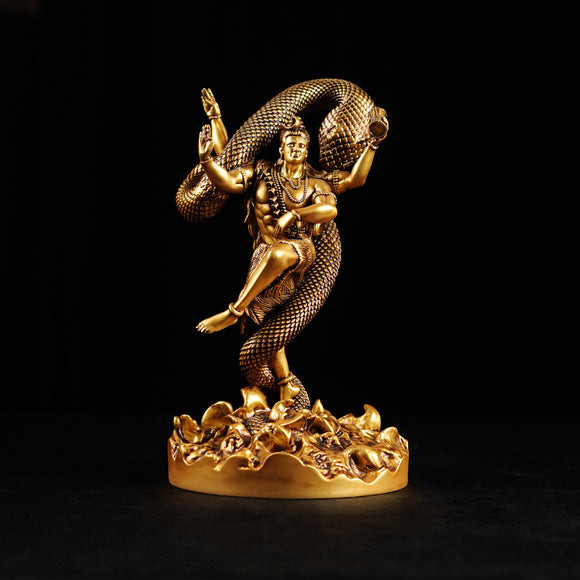
Mystical depiction of Lord Shiva, highlighting his enigmatic nature and divine presence within his family narrative.
Unveiling the Parents of God Shiva
The question of God Shiva’s parentage is a subject of intriguing narratives and varied interpretations within Hindu scriptures. Unlike deities with straightforward genealogies, Shiva’s origin is often rooted in cosmic principles rather than conventional birth.
Lord Brahma as the Father of Shiva
Ancient Puranas often narrate that Lord Brahma, the Creator God in the Hindu Trinity, is considered the father of Lord Shiva. Brahma, typically depicted with four heads symbolizing his dominion over the four Vedas and vast wisdom, emerged from a lotus arising from Lord Vishnu’s navel. While Brahma is credited with creation, his worship is less prevalent compared to Vishnu and Shiva, with fewer temples dedicated solely to him.
However, it’s crucial to understand that Shiva’s birth is not biological in the human sense. Instead, scriptures describe Shiva’s emergence through cosmic forces. He is believed to have originated from the Hiranyagarbha, the ‘cosmic egg’ representing the universe’s primeval stage. Notably, Brahma and Vishnu are also described to have originated similarly, emphasizing their cosmic origins rather than conventional births.
Goddess Parvati as the Mother of Shiva
In a seemingly paradoxical yet profound concept, Goddess Parvati, Shiva’s consort, is also revered as his mother in certain contexts. This understanding stems from Parvati’s identity as Shakti, the supreme divine feminine energy in Hinduism. Parvati is considered the ultimate goddess, manifesting in diverse forms like Kali, Durga, and others, each embodying different facets of her power.
One of Parvati’s incarnations is Prakriti, representing primordial nature and the universal mother. As Prakriti, Parvati is believed to be the mother of all creation, including the divine beings. This perspective establishes a mother-son relationship between Parvati and Shiva, highlighting the interconnectedness of divine energies. Parvati, in her various forms, symbolizes power, creation, and nurturing, taking avatars to protect the universe and uphold Dharma.
Scriptural Evidence for Shiva’s Origin
The Srimad Bhagavad Gita offers scriptural insights into Shiva’s origin. Chapter 14, verses 3 to 5, state that the three gunas (qualities of nature) – Raj (Rajas guna, associated with Brahma), Sat (Sattva guna, associated with Vishnu), and Tam (Tamas guna, associated with Shankar/Shiva) – originate from Prakriti, identified as Goddess Durga. Prakriti, or mother nature, is thus considered the source from which these three fundamental forces and their associated deities emerge.
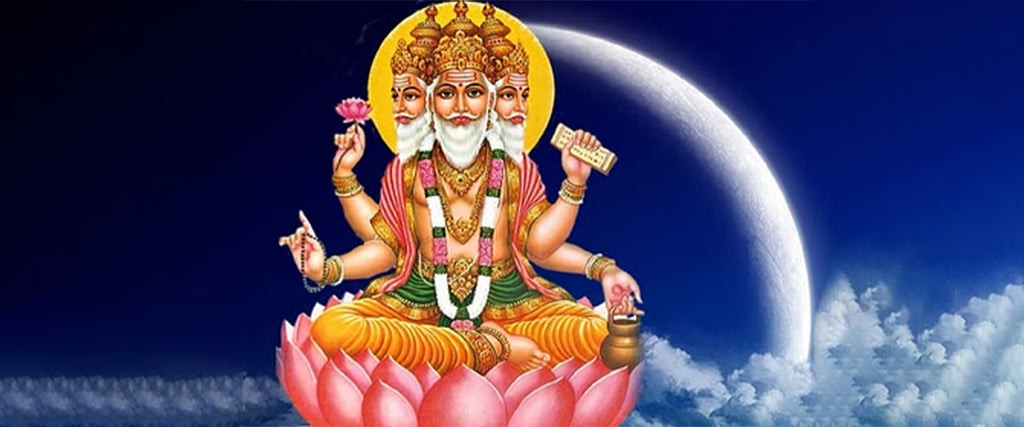
Lord Brahma, the Creator in Hindu Trinity, identified in some traditions as the cosmic father of Lord Shiva.
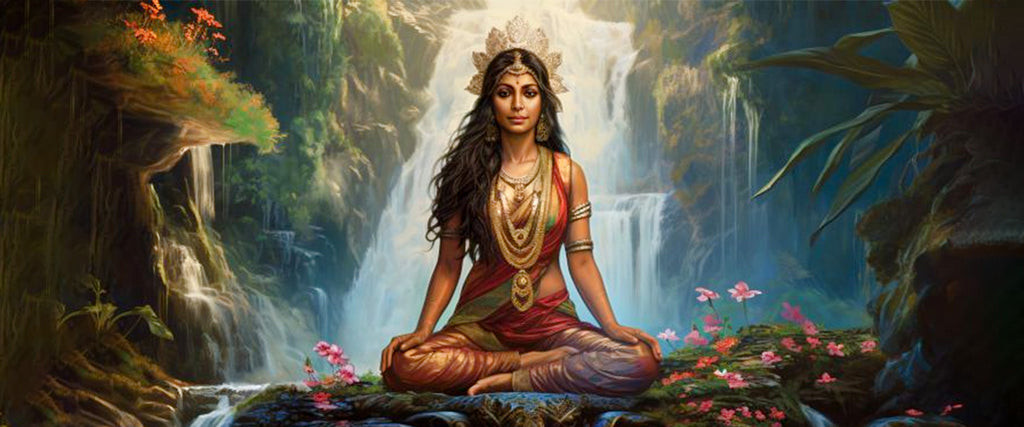
Goddess Parvati as Prakriti, the divine mother and source of cosmic energy, considered the mother aspect of Lord Shiva in Hindu philosophy.
The Core of Shiva’s Family: Consort and Children
God Shiva’s family extends to his immediate divine household, comprising his consort, Goddess Parvati, and their revered sons, each embodying unique divine attributes.
Goddess Parvati: The Divine Consort of Shiva
Goddess Parvati is not only considered the mother aspect of Shiva in certain contexts but is primarily known as his divine consort and wife. Their union represents the perfect balance of masculine and feminine energies in the cosmos. Parvati is depicted as Shiva’s equal partner, complementing his destructive and transformative aspects with her nurturing and creative energies. Their relationship is central to Hindu philosophy, symbolizing domestic harmony, mutual respect, and divine partnership. The form of Ardhanarishvara, depicting Shiva and Parvati as a unified half-male, half-female deity, beautifully encapsulates this inseparable union.
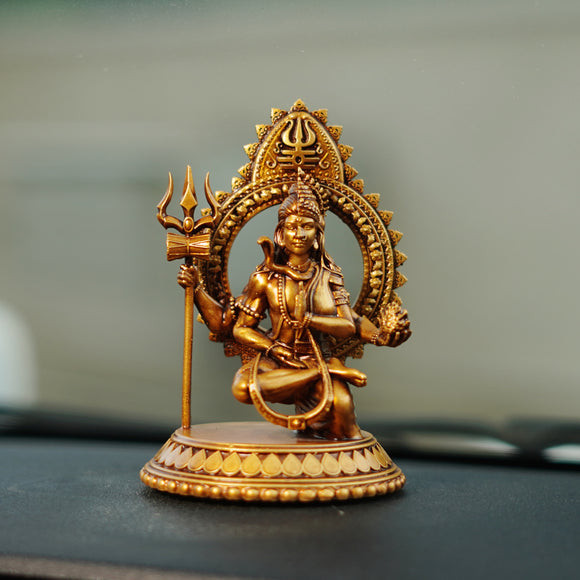
Ardhanarishvara: The androgynous form of Lord Shiva and Goddess Parvati, symbolizing the inseparable unity of masculine and feminine energies.
Lord Ganesha: The God of Wisdom and Obstacles
Lord Ganesha, instantly recognizable by his elephant head, is the elder son of Shiva and Parvati. He is revered as the God of Wisdom, prosperity, and the remover of obstacles. Ganesha’s birth story is filled with divine mystery, and he is celebrated for his intelligence, wit, and benevolence. Hindu devotees invoke Ganesha before starting any new venture or undertaking, seeking his blessings for success and obstacle removal. His iconic form, with a large belly symbolizing abundance and a single tusk representing overcoming dualities, is deeply symbolic. Mythological tales highlight Ganesha’s cleverness, such as the famous story where he circumambulates his parents to win a race against his brother, declaring them to be his world.
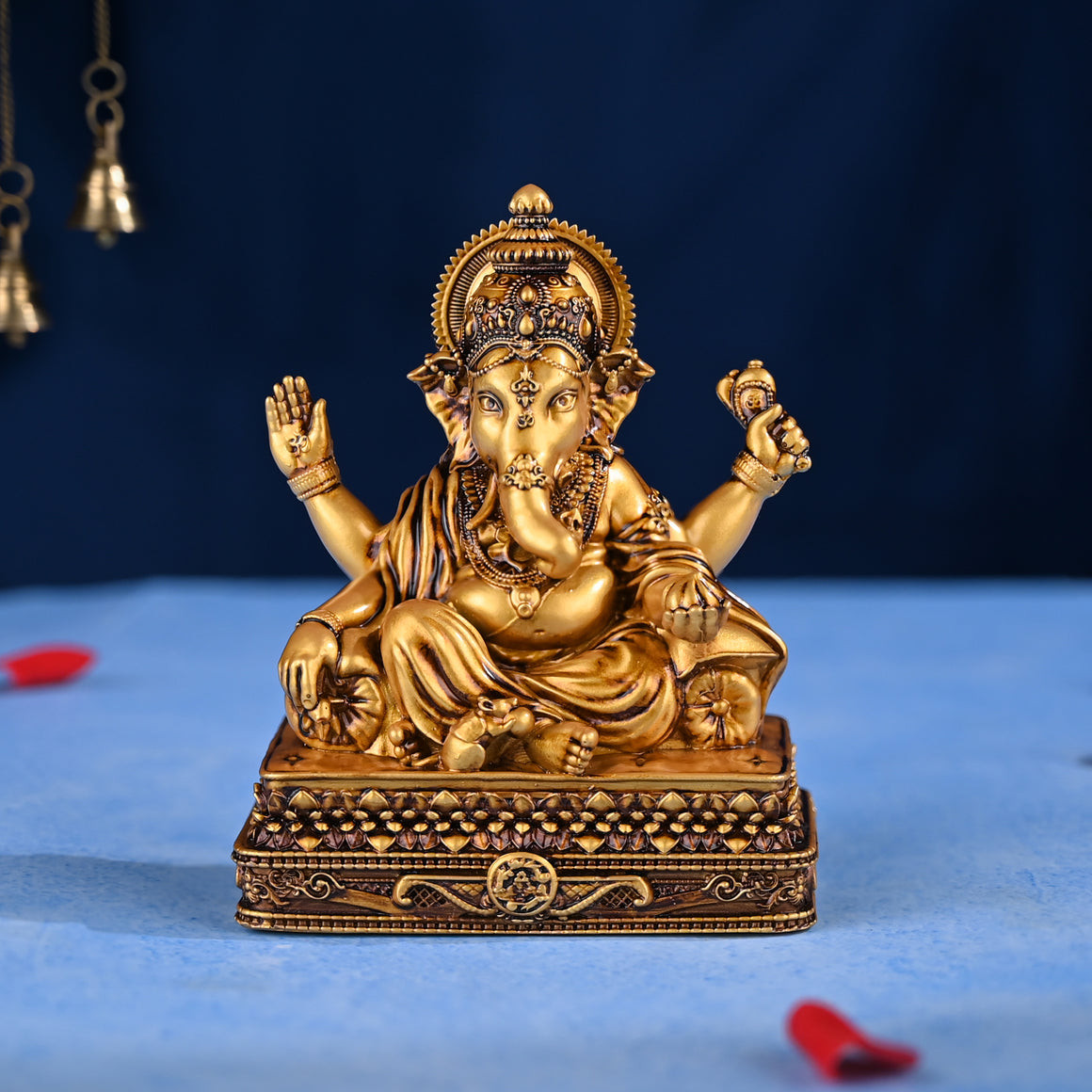
Lord Ganesha, son of Shiva and Parvati, revered as the god of wisdom, prosperity, and remover of obstacles in Hindu households.
Lord Kartikeya: The God of War and Courage
Lord Kartikeya, also known as Skanda or Murugan, is the younger son of Shiva and Parvati. He is venerated as the God of War and Victory, embodying courage, valor, and leadership. Often depicted as a youthful warrior riding a peacock, Kartikeya symbolizes triumph over negativity and the power of righteous action. His role as a divine general leading the celestial armies highlights his strength and protective nature. Kartikeya is particularly popular in South India, where he is worshipped as Murugan.
Symbolism and Significance of God Shiva’s Family
The family of God Shiva is more than just a mythological narrative; it represents profound principles within Hinduism. Lord Brahma, the Creator, embodies the cyclical nature of creation, representing beginnings and the continuous flow of existence. Lord Shiva, the Destroyer, signifies transformation and change, highlighting the impermanence of all things and the necessity of destruction for renewal. Goddess Parvati, as the nurturing mother and devoted wife, embodies feminine energy, balance, and harmony, complementing Shiva’s masculine force.
Together, God Shiva, Goddess Parvati, and their children symbolize core Hindu values: love, devotion, duty, and the eternal cycle of creation, preservation, and destruction. Their divine family serves as an inspiration for devotees, reminding them of the importance of balance, harmony, and family values in life.
Takeaway
God Shiva, in essence, is considered to be without beginning or end, transcending the limitations of birth and death. While scriptures offer glimpses into aspects of his divine play (leela), they emphasize his eternal and omnipresent nature. Hinduism emphasizes faith and belief as central tenets. Understanding the narratives surrounding God Shiva’s family is enriched by faith, allowing devotees to connect with the deeper symbolic meanings embedded within these stories. Ultimately, the essence of God Shiva and his family is understood through devotion and personal spiritual experience.
Frequently Asked Questions (FAQs)
Q1. Who constitutes the full family of Lord Shiva?
A. The primary members of Lord Shiva’s family include his consort, Parvati, and their two sons, Kartikeya and Ganesha. Some traditions also include Ashok Sundari (also known as Amba) as their daughter.
Q2. Are there daughters of Lord Shiva mentioned in scriptures?
A. Some lesser-known traditions mention daughters of Lord Shiva, such as Jaya, Vishhara, Shamliwari, Dev, and Dotli, often associated with snake goddesses. Worship of these figures is less mainstream but present in certain regional beliefs.
Q3. What is the symbolism of Mahadev’s (Shiva’s) three eyes?
A. Lord Shiva’s three eyes symbolize different cosmic forces and aspects of consciousness. The left eye represents the moon (lunar energy), the right eye symbolizes the sun (solar energy), and the third eye in the center represents fire, inner wisdom, and destructive power.
Q4. Why is Shiva depicted with a snake around his neck?
A. The snake Vasuki around Shiva’s neck symbolizes the cyclical nature of time, death, and regeneration. It also represents controlled ego; Shiva’s mastery over ego is depicted by wearing the snake as an ornament.
Q5. Is it auspicious to keep a Lord Shiva murti (idol) at home?
A. Yes, keeping a Lord Shiva murti at home is considered very auspicious. Regular worship is believed to bring peace, prosperity, and spiritual growth to the household.


